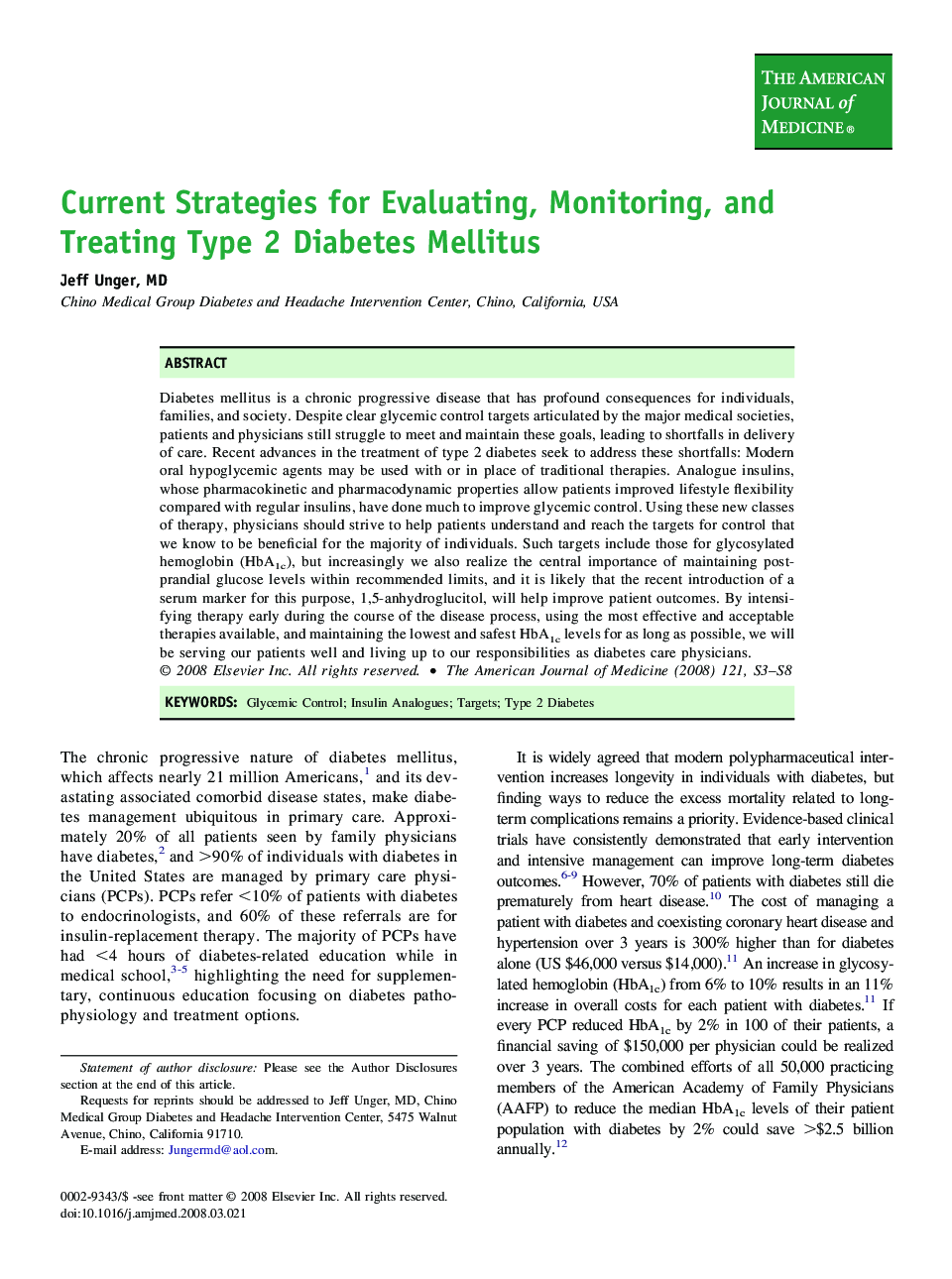| Article ID | Journal | Published Year | Pages | File Type |
|---|---|---|---|---|
| 2725835 | The American Journal of Medicine | 2008 | 6 Pages |
Diabetes mellitus is a chronic progressive disease that has profound consequences for individuals, families, and society. Despite clear glycemic control targets articulated by the major medical societies, patients and physicians still struggle to meet and maintain these goals, leading to shortfalls in delivery of care. Recent advances in the treatment of type 2 diabetes seek to address these shortfalls: Modern oral hypoglycemic agents may be used with or in place of traditional therapies. Analogue insulins, whose pharmacokinetic and pharmacodynamic properties allow patients improved lifestyle flexibility compared with regular insulins, have done much to improve glycemic control. Using these new classes of therapy, physicians should strive to help patients understand and reach the targets for control that we know to be beneficial for the majority of individuals. Such targets include those for glycosylated hemoglobin (HbA1c), but increasingly we also realize the central importance of maintaining postprandial glucose levels within recommended limits, and it is likely that the recent introduction of a serum marker for this purpose, 1,5-anhydroglucitol, will help improve patient outcomes. By intensifying therapy early during the course of the disease process, using the most effective and acceptable therapies available, and maintaining the lowest and safest HbA1c levels for as long as possible, we will be serving our patients well and living up to our responsibilities as diabetes care physicians.
